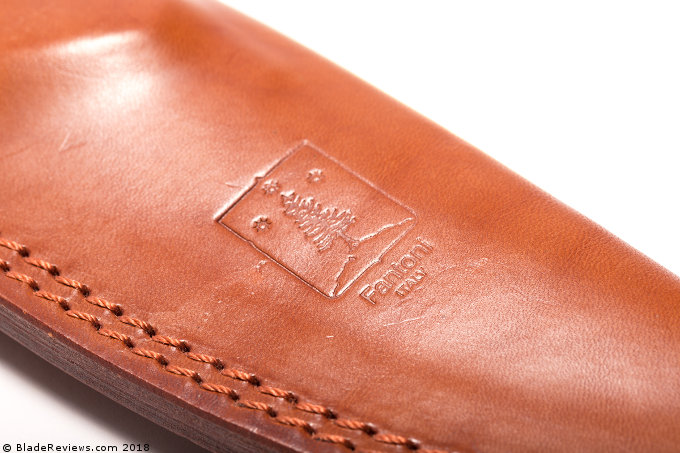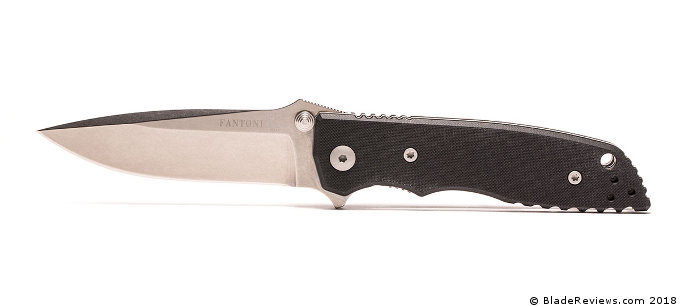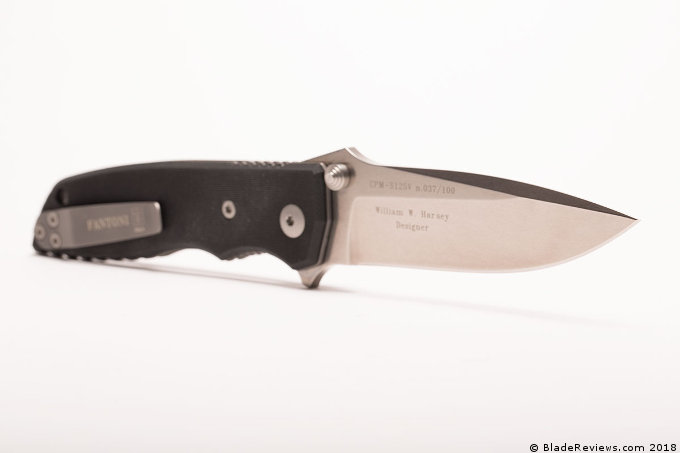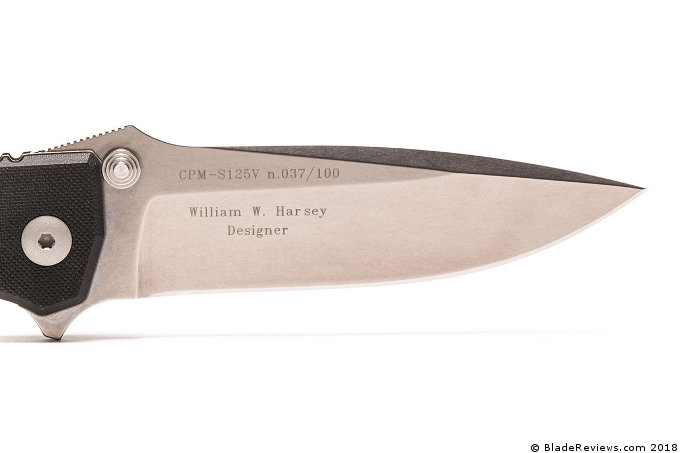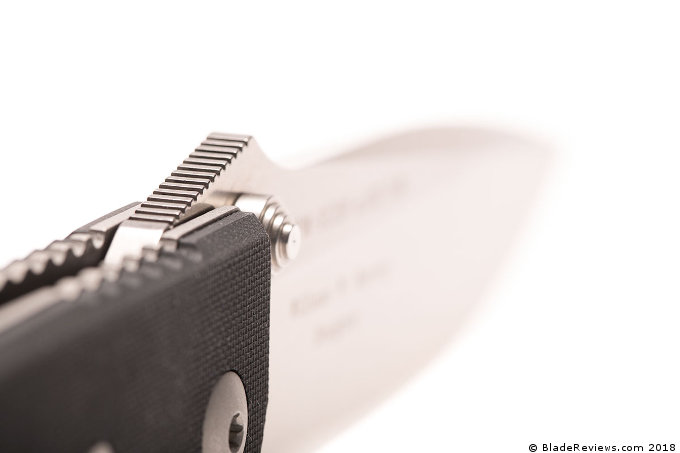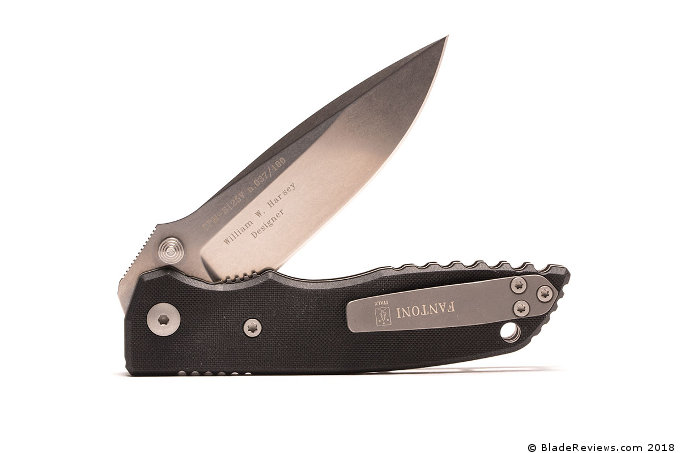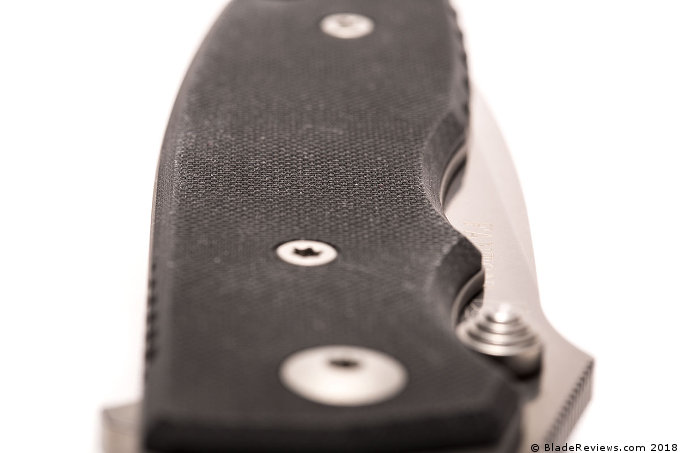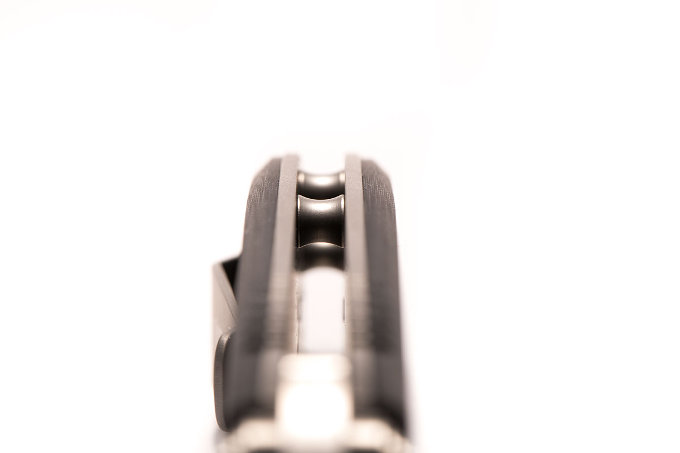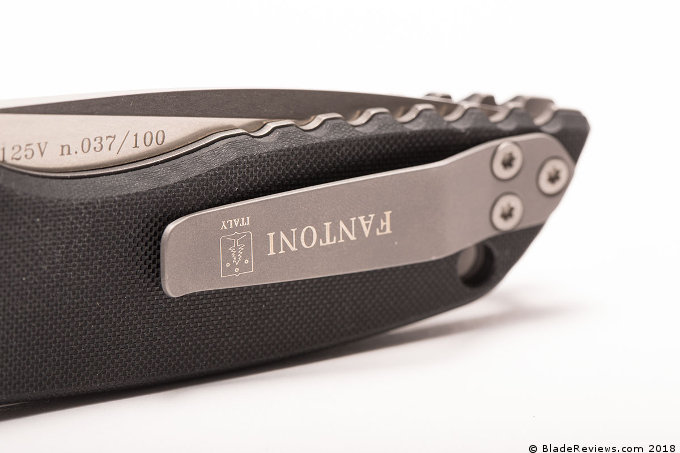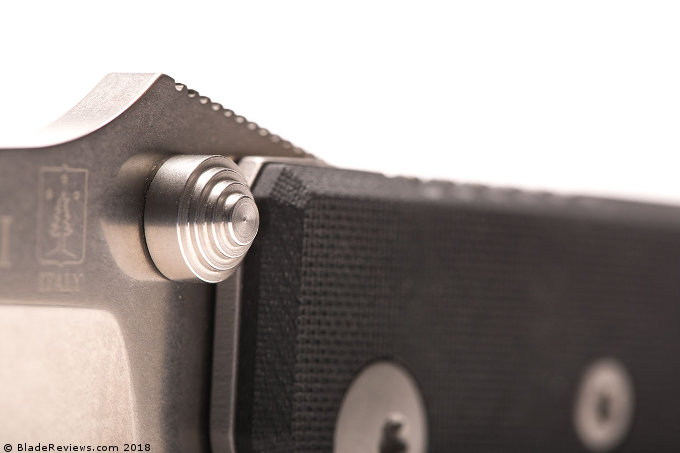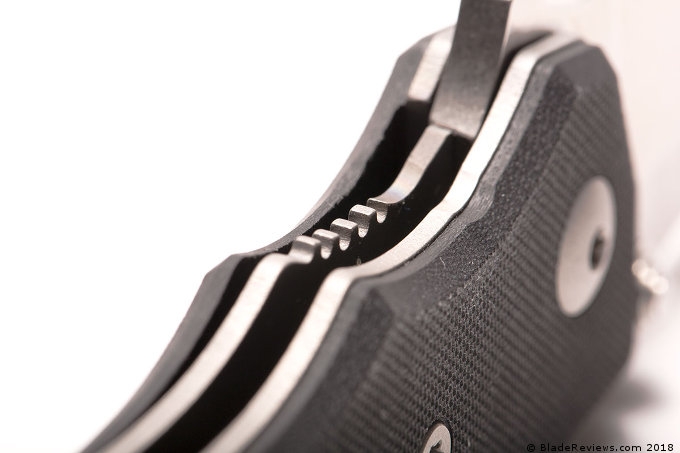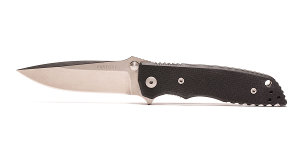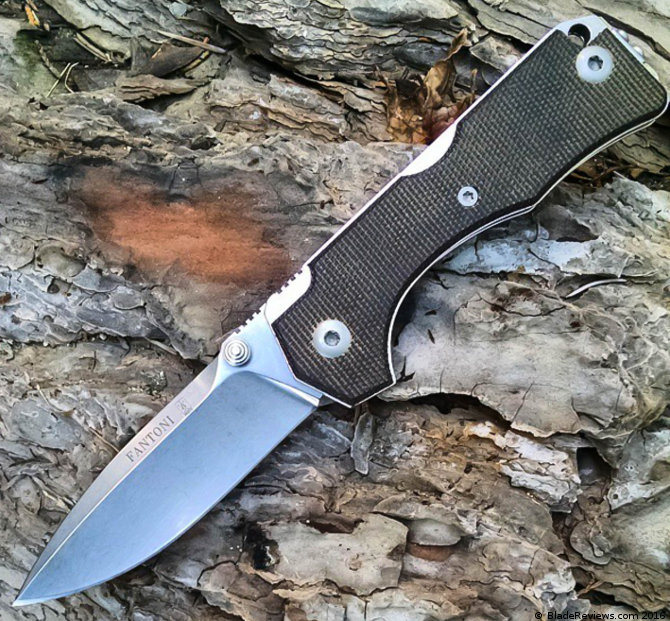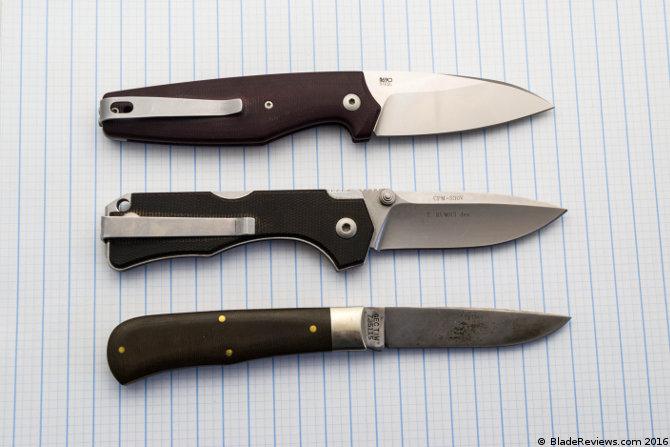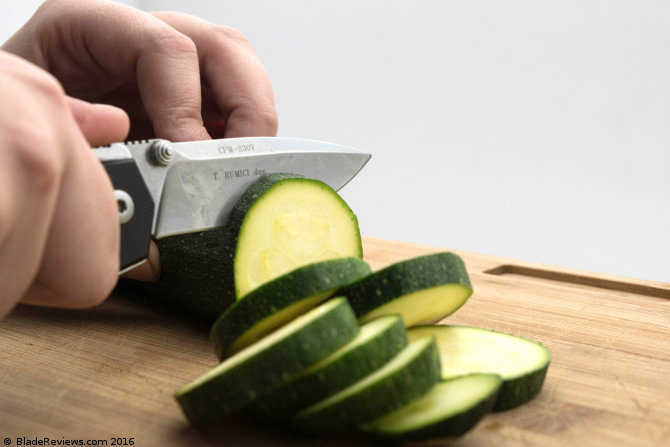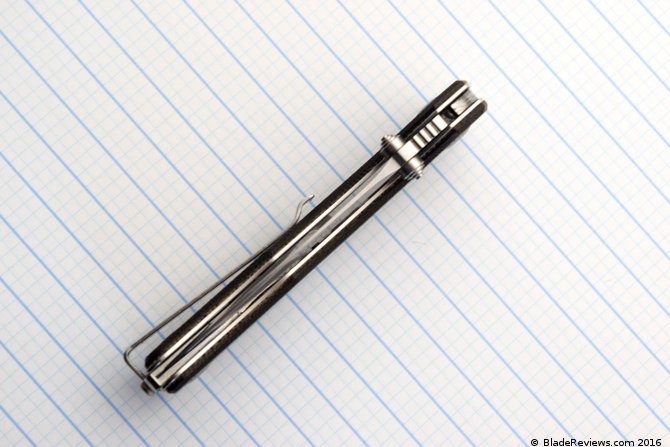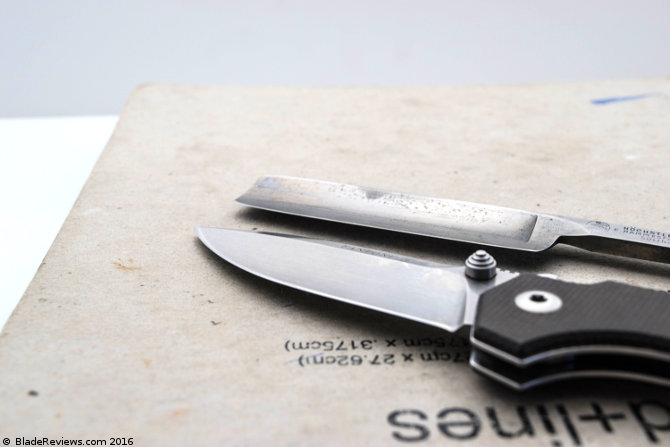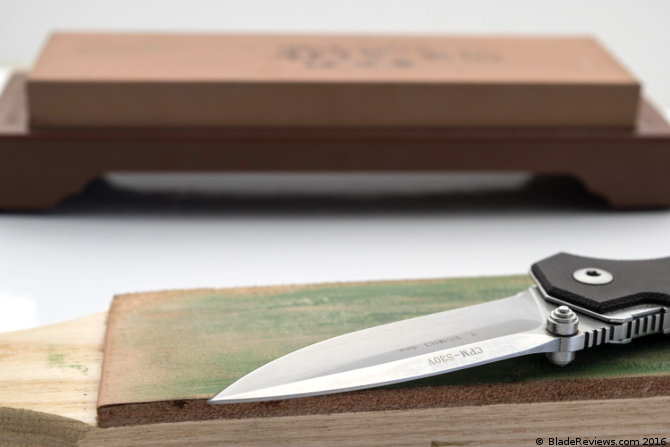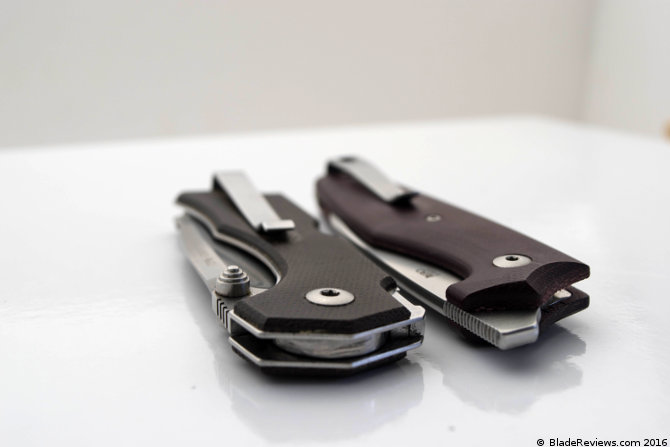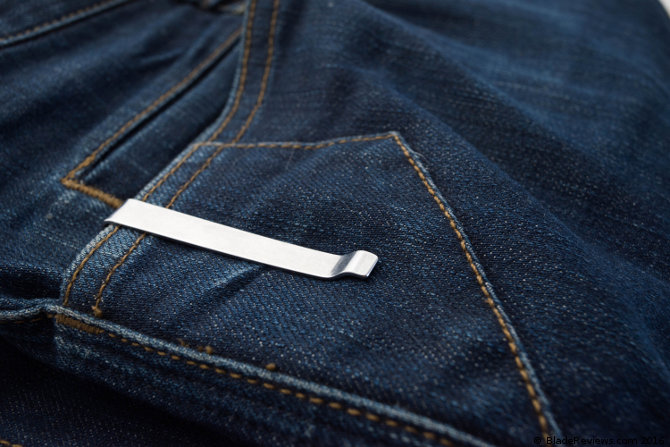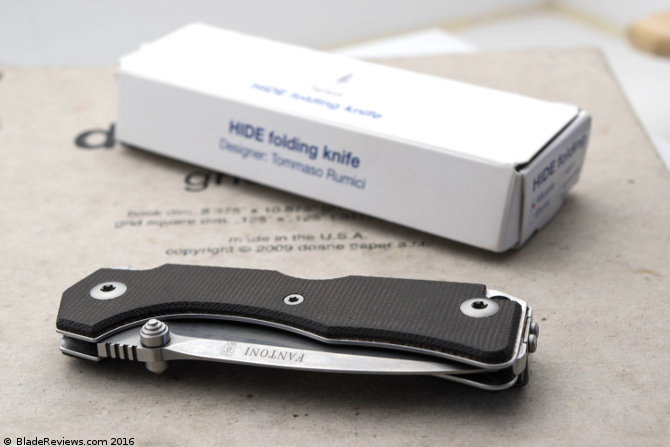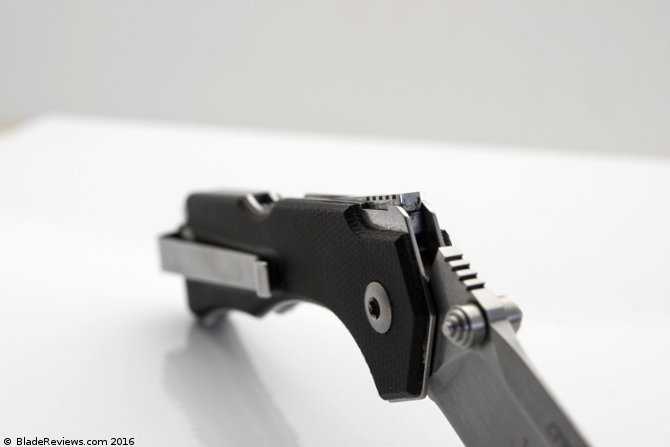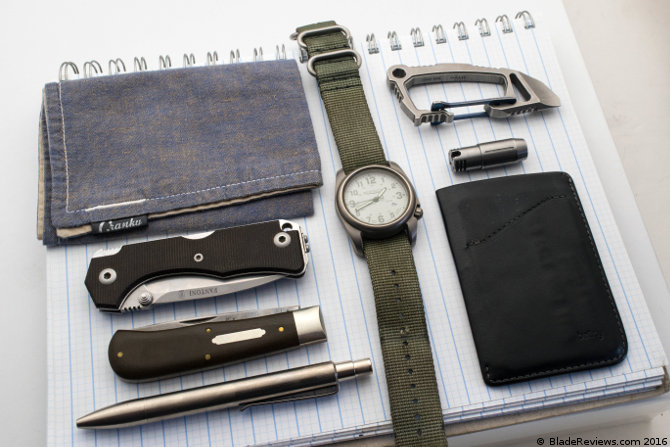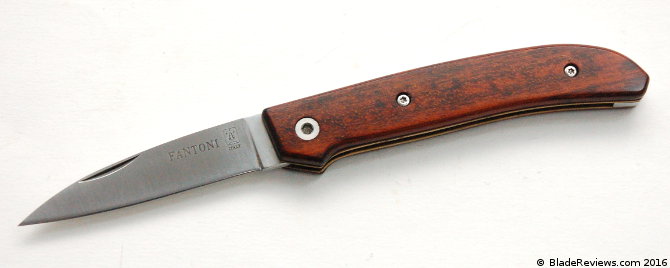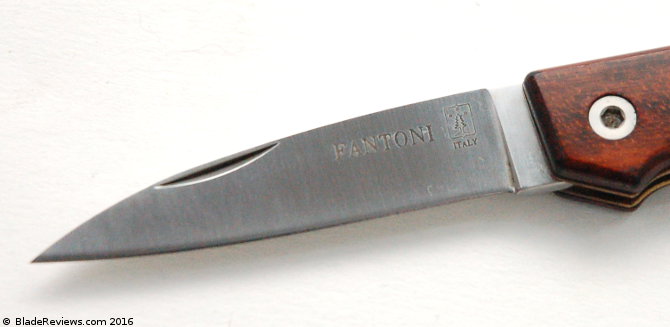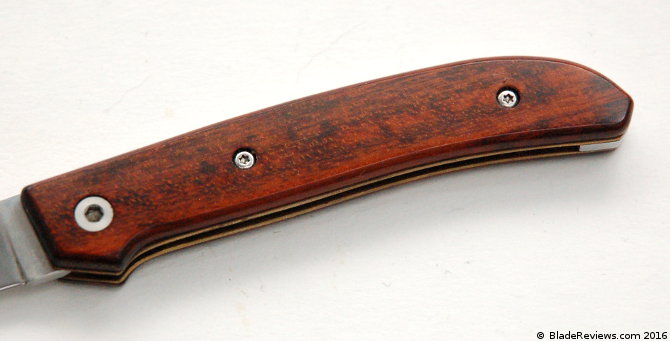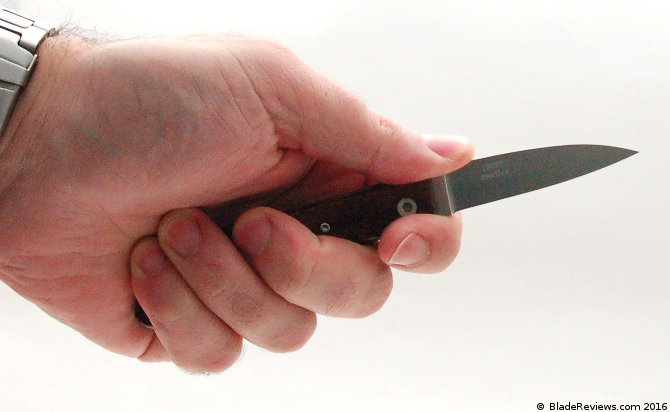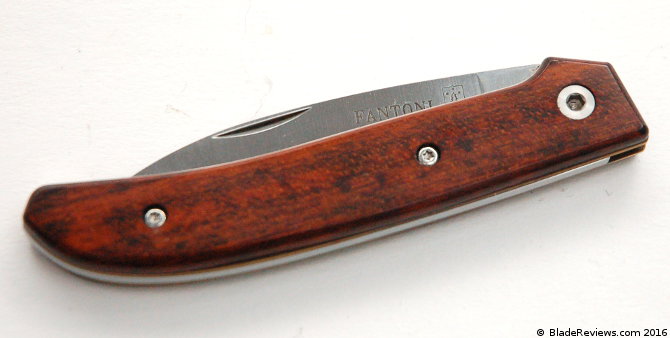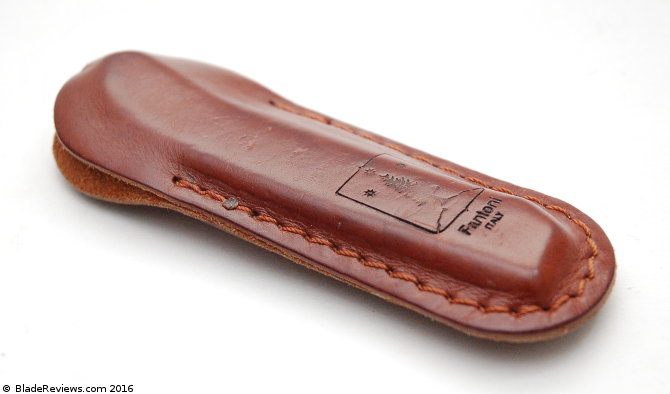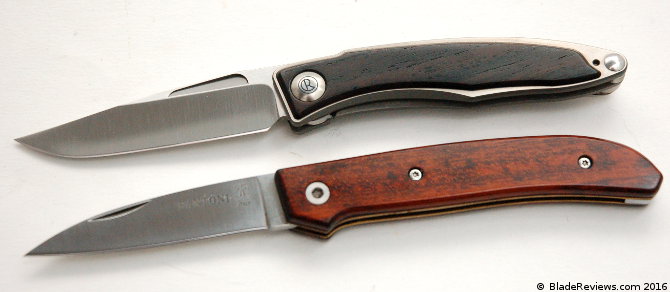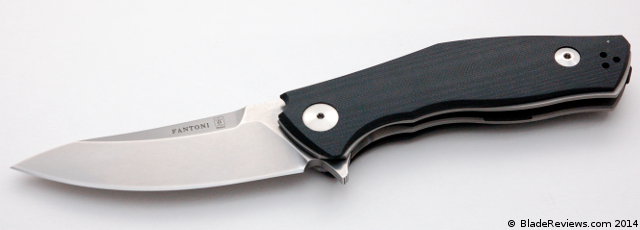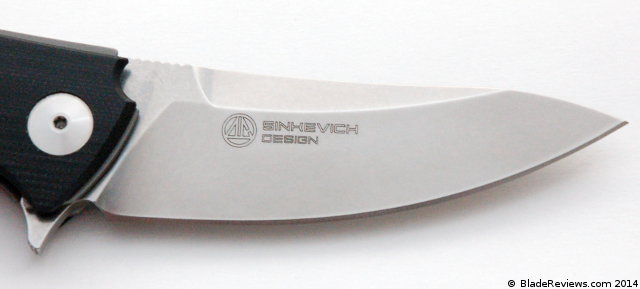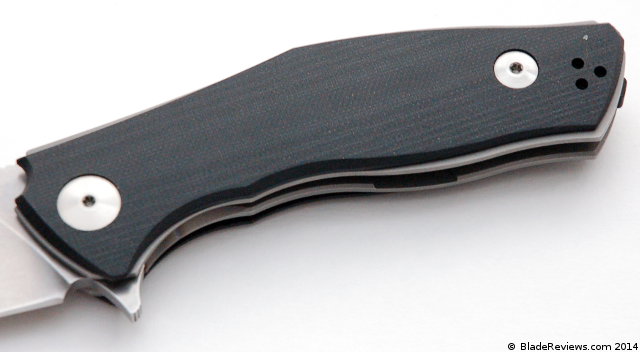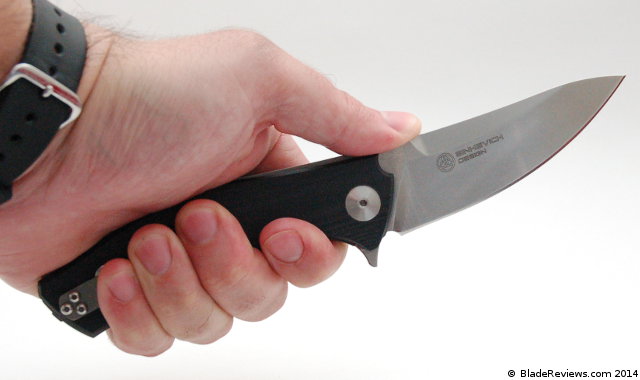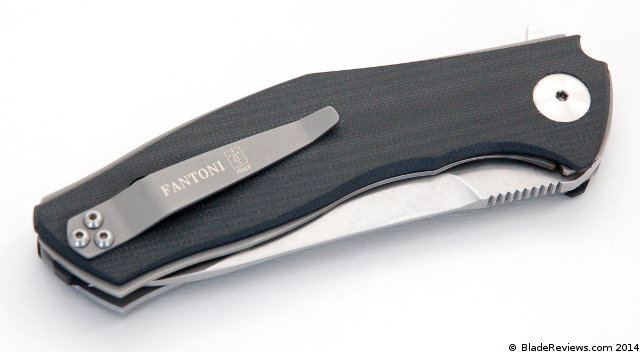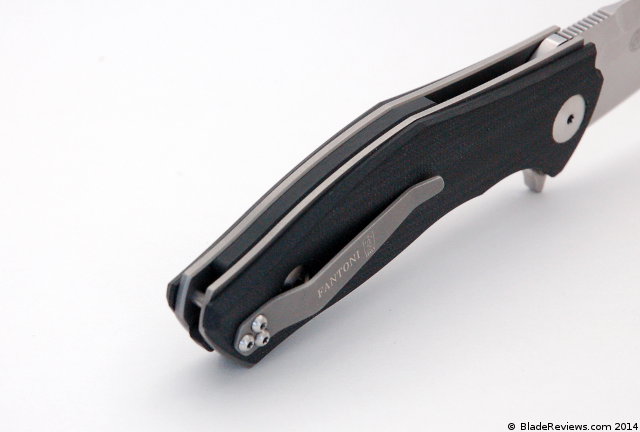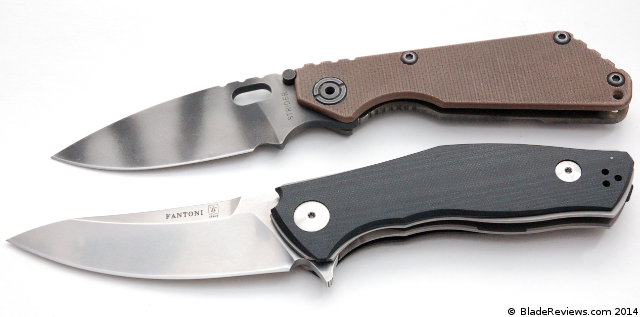Last Updated: November 3, 2019
The C.U.T. is a knife conceived by Dmitry Sinkevich and produced by Fantoni Knives. Sinkevich is an interesting Russian custom knife maker who creates a wide variety of designs, a folding version of this knife being one of them.
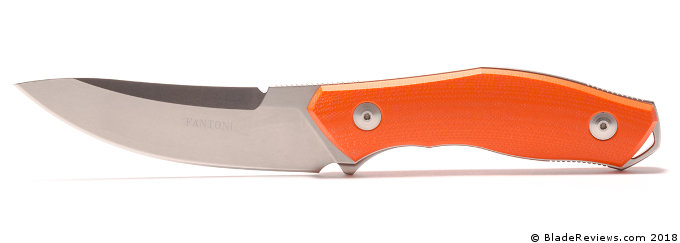
Buy the Fantoni C.U.T. at KnifeArt
C.U.T stands for Contrast Utility Tactical. I’m not really sure what that means but it doesn’t detract from the fact that this is an awesome knife.
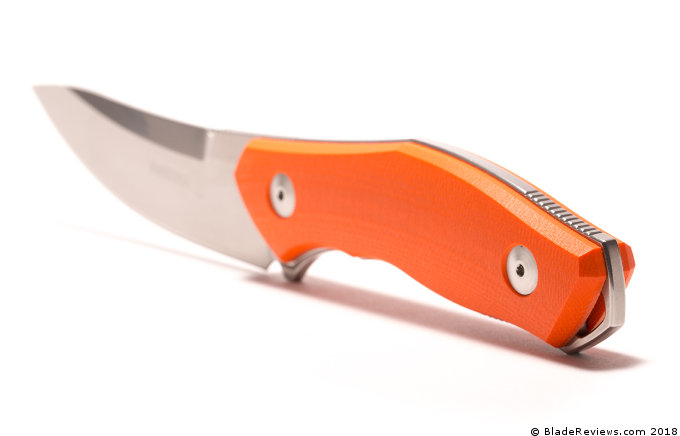
General Dimensions and Blade Details
The C.U.T. has an overall length of 9.06″, a 4.00″ blade blade, weighs 6.173 ounces, and is made in Italy. Fantoni makes a production C.U.T. folder as well that comes in black with either a flipper or a stylized thumb hole. The fixed blade also comes in a ‘tactical’ variation with black G10 handle scales and a Kydex sheath. This version, which is marketed toward the outdoor crowd ships with a natural or black, top grain leather sheath.
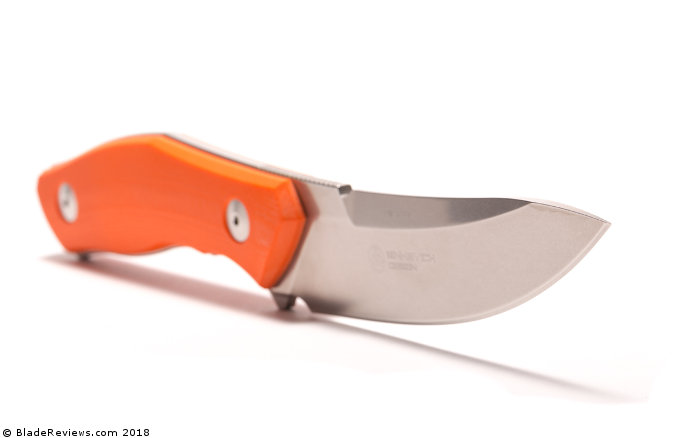
The blade steel, S-30V, contains 1.46% carbon. With more than 1.2% it is enough to be classified as an “ultra high carbon” alloy. The addition of 14% chromium also makes it a stainless. 2% molybdenum and 4% vanadium has been added to improve the edge qualities through grain refinement and an even distribution of stable carbides.
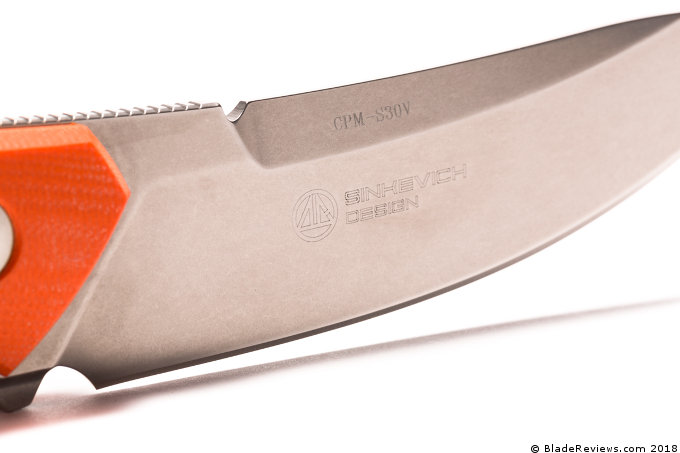
The unique composition of S30V is achievable through a powder metallurgy (sintering) process that allows the combination of contrasting elements. The result garners the “super steel” classification. Although an impressive title, there are many other competitive super steels, notably Böhler M390, Damasteel RWL-34 and Carpenter CTS 204P.
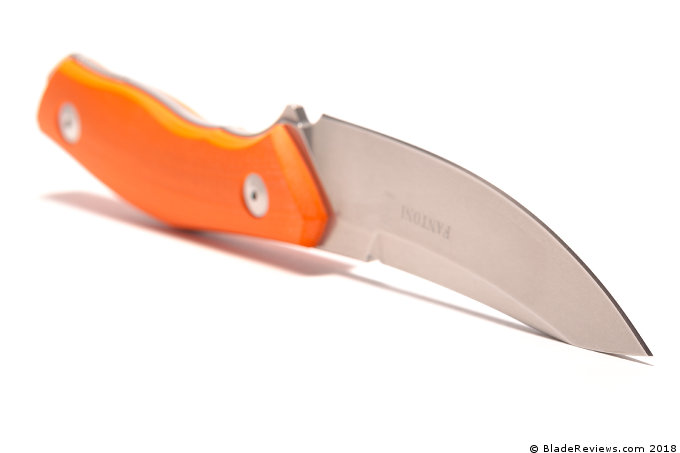
The blade has an up-swept profile that increases the cutting surface and creates a long, sloping belly. This is similar to a trailing point except that the opposite edge drops to meet at the tip producing a straight point, rather than a hooked one. The steel has an over-all thickness of .154″ (4mm) and has been reduced with a high flat grind ending in a good sized choil for maintenance. A secondary bevel creates the keen, final cutting edge. A long swedge is ground along the majority of the spine for easy push cuts. From the side it would appear to be a double edge but it isn’t. Rounding things out is an interesting choil like notch at the ricasso.
The grinds are well rendered and the blade has received a fine stone wash finish. Fantoni and Sinkevich’s logos and word marks along with the steel type are tastefully laser etched on the sides of the blade.
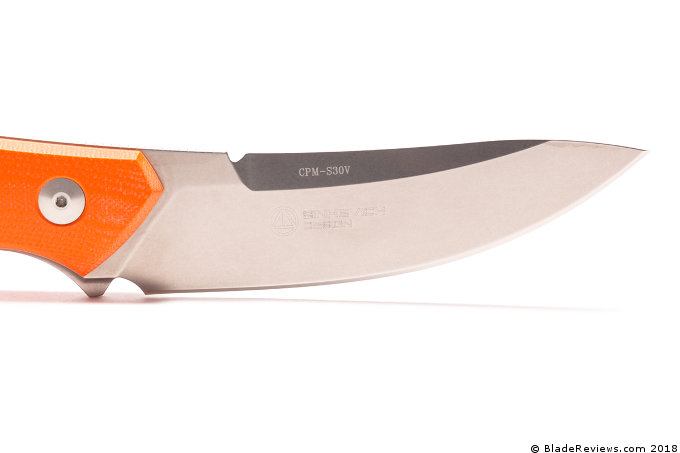
While .25″+ blade stock has been popular in fixed knives these days, it is apparent that this thinner blade is a great choice for users who don’t abuse their tools and want performance over brawn. That’s not to say that the C.U.T. won’t hold up to serious use. It’s just well balanced, with a slight lean toward high cutting efficiency.
Handle and Ergonomics
For the handle scales Fantoni has used G10. This glass reinforced epoxy laminate has a high resistance to solvents and is extremely tough. The material has a slightly abrasive finish that provides good grip.
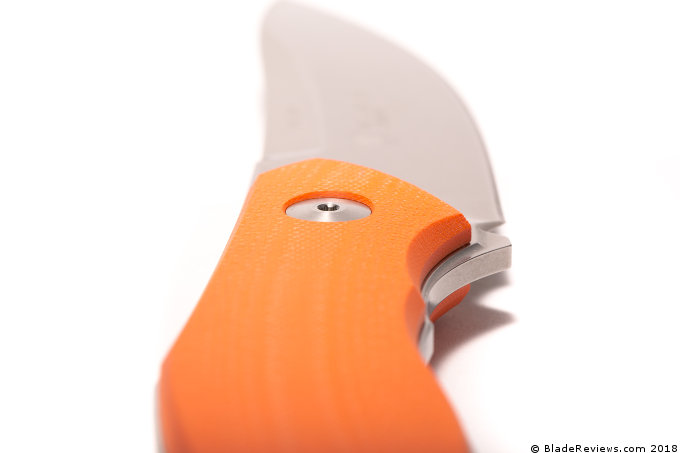
As with many higher end fixed blades the C.U.T. has a full tang construction. This means that the handle is backed up by the same piece of steel that makes the blade and travels to, or extends past the handle scales. While a full tang construction normally adds some weight, it is superior in strength to a partial, hidden “stick tang”. To keep things lean, Fantoni has removed a substantial amount of stock beneath the handle scales to keep the knife at a modest 6.2 oz.
The ergonomics one the knife are also well thought out. There is a row of jimping on the thumb ramp with more on each edge of the pommel working to add traction in a standard or reverse grip. The inner edge of the handle has subtle finger grooves that help to lock the hand in place without feeling restrictive. Toward the blade there is a front guard that prevents your hand from sliding forward. The detailing here is exceptional. The way that the guard appears to be wrapped by the blade and blends into the grind is beautifully executed.
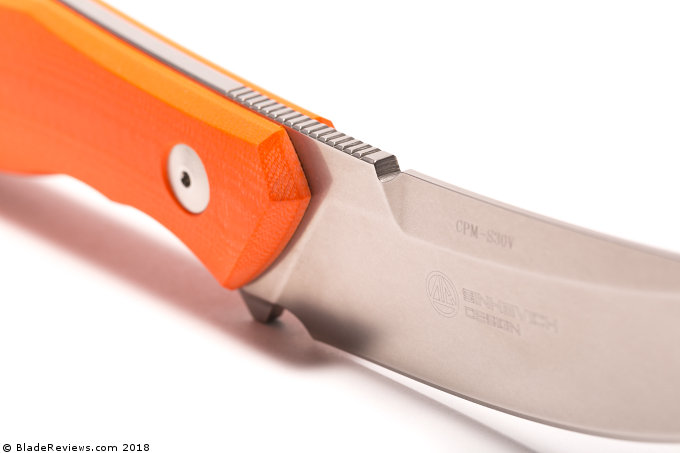
The back side of the handle has a slight peak that creates a convex shape that nests against your palm. While slightly angular it doesn’t create a noticeable hot spot for my medium sized hand. The scales are a good, filling thickness. All edges have been contoured for comfort and the corners are cleanly chamfered. The same is true for the edges of the tang which extend slightly past the orange G10’s edges. An exposed pommel includes a lanyard cut-out and can be leveraged as an impact tool.
It’s welcome that there isn’t a heavy texture on the handle nor is the jimping saw-like. The features that the handle has are already enough for extended, safe use and won’t abrade your hands.
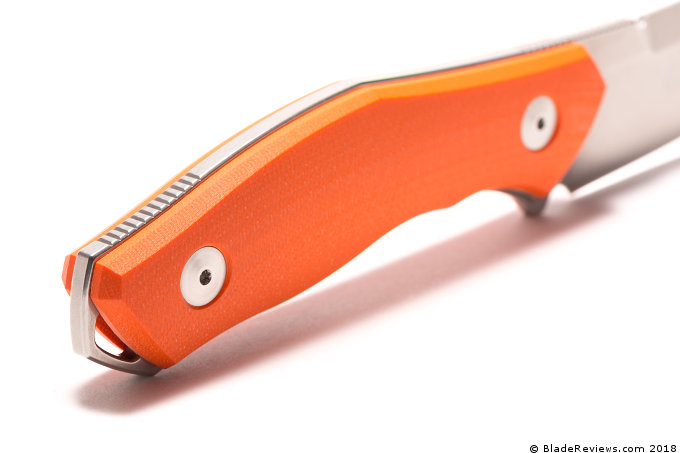
Sheath
For carry the knife ships with an elegant top-grain leather sheath. The belt loop and two sides are made from one piece of leather. This smart construction is form fitted to the handle then glued and stitched for strength.
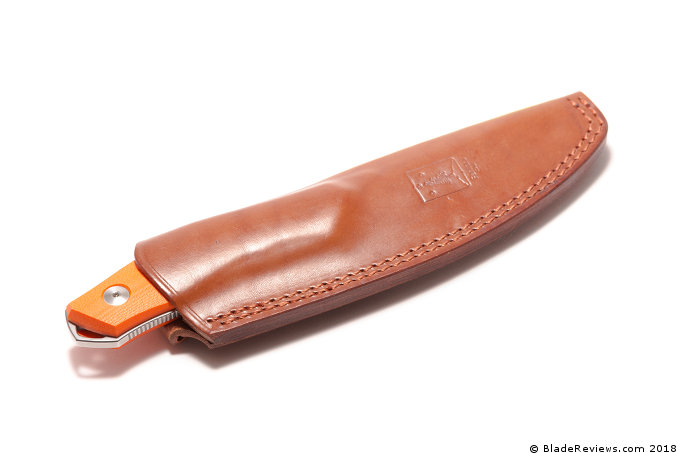
The version in this review has a classic, natural color with a fine glossy finish. Fantoni’s logo is embossed on the front side with “Made in Italy” on the back. The sheath also comes in black but this version has a more dynamic look in my opinion.
Fantoni C.U.T. Review – Final Thoughts
When everything is considered the C.U.T. is an exceptional belt knife. The materials are a solid choice while the fit and finish is outstanding. The design has some elements that remind me of classic eastern European hunting knives. That aside the clean, angular lines and precise execution of all the elements are very modern. They could easily have the C.U.T., along with other Sinkevich knives, comfortably residing somewhere in the future.
Fantoni has done a great job teaming up with talented designers like Tommaso Rumici and William Harsey in the past. Their collaboration with Dmitry Sinkevich also falls into this category, combining key elements in a effective, winning combination.
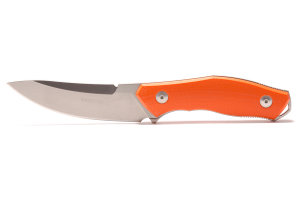
Fantoni CUT
From: KnifeArt
Editor: I recommend buying the Fantoni C.U.T. at KnifeArt. Please consider that purchasing anything through any of the links on this website, including links to Amazon and BladeHQ, helps support BladeReviews.com, and keeps the site going. Any and all support is greatly appreciated. Thank you very much.
Additional Specifications:
Overall length: 9.06″(230 mm)
Weight: 6.173 oz (175g)
Blade
Length: 4″ (102 mm) (measured to out most point of the scales to the tip)
Thickness: 0.154″ (4 mm)
Blade: CPM S30V
Hardness: HRC 61-62
Finish: Stonewashed
Handle:
Length 4.92″ (128 mm)
Full Tang Construction
Orange or Black G-10
Sheath: Black or Tan Leather or Kydex
Made In Maniago, Italy
